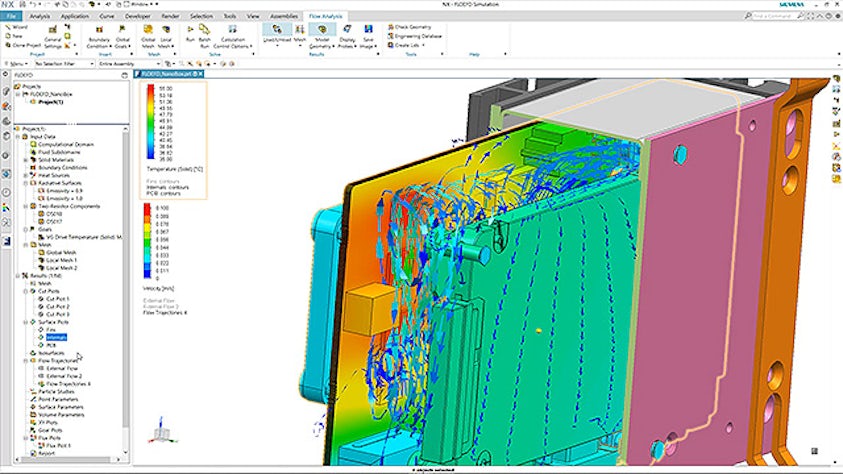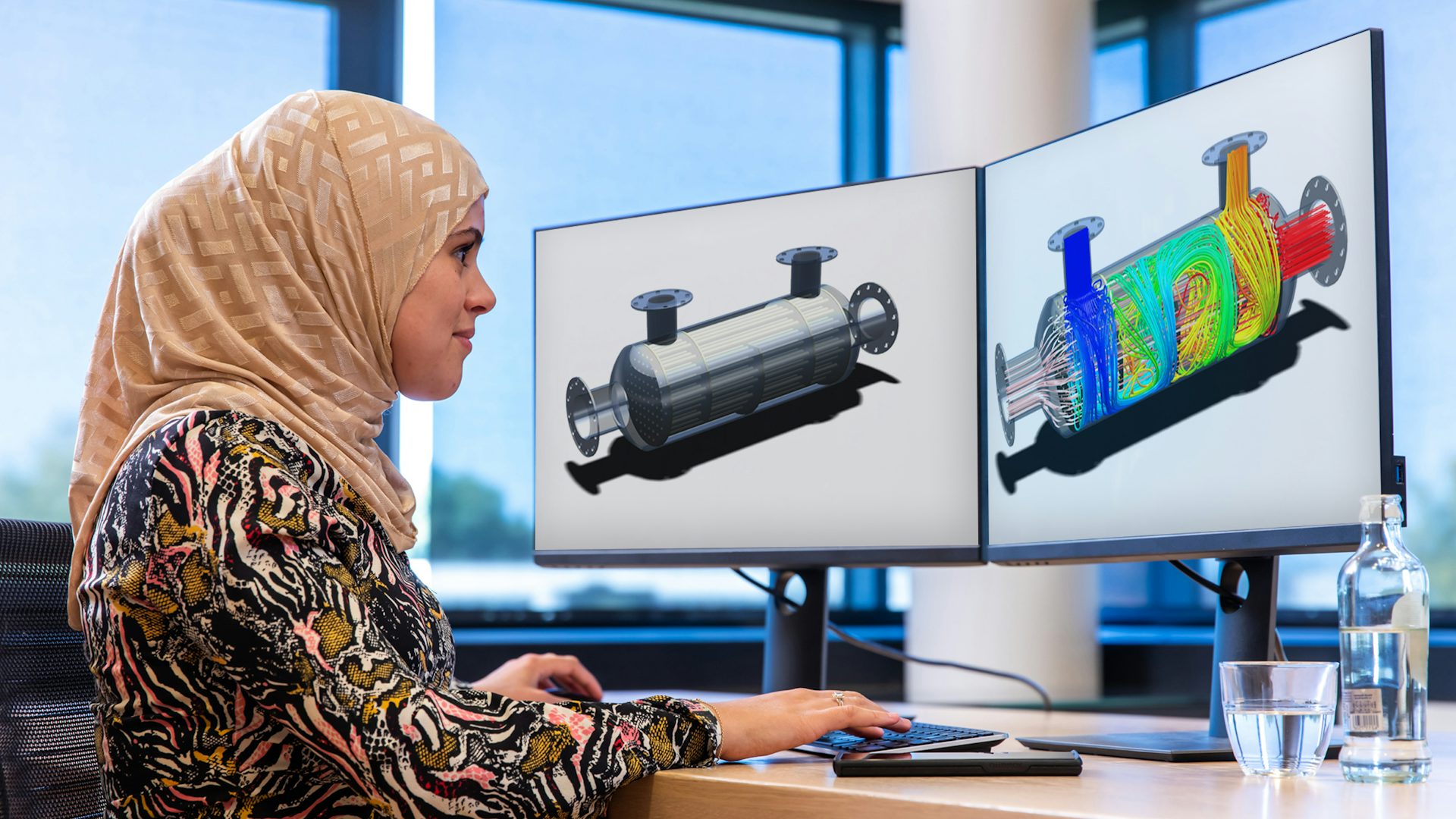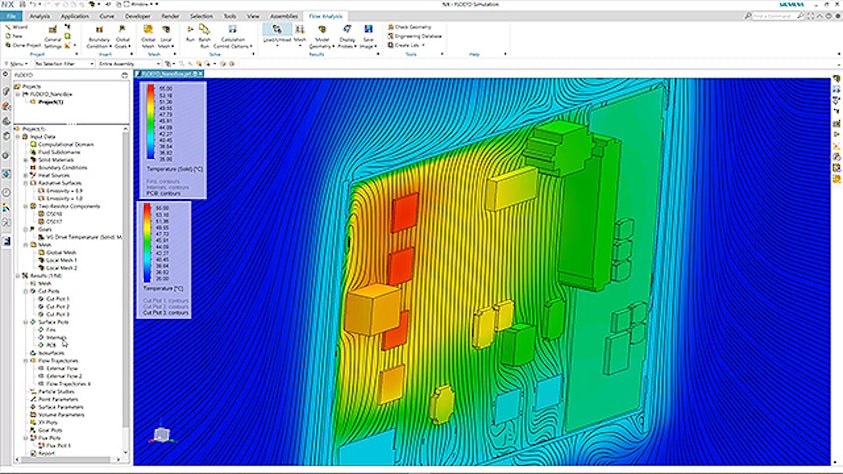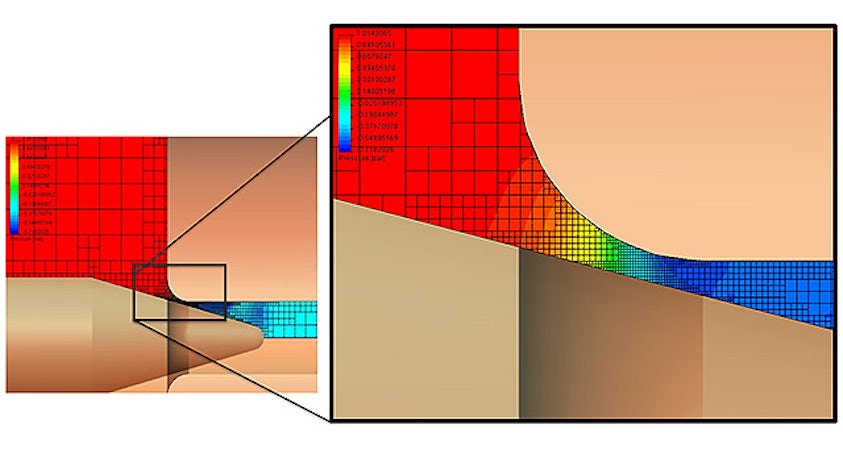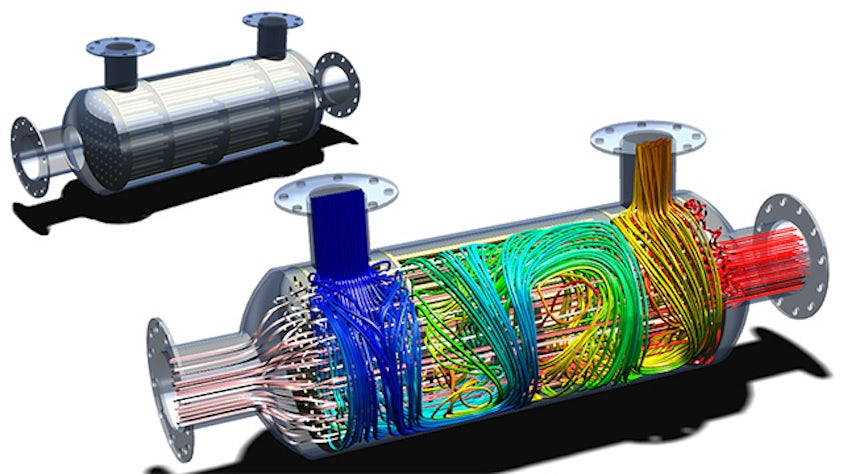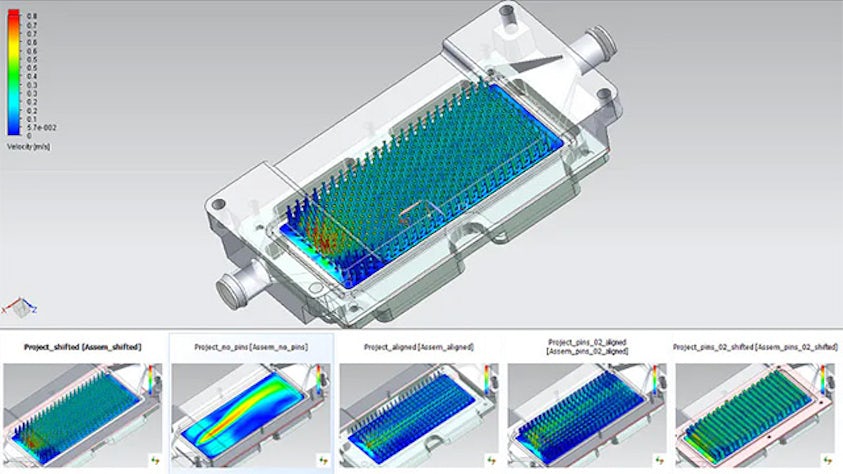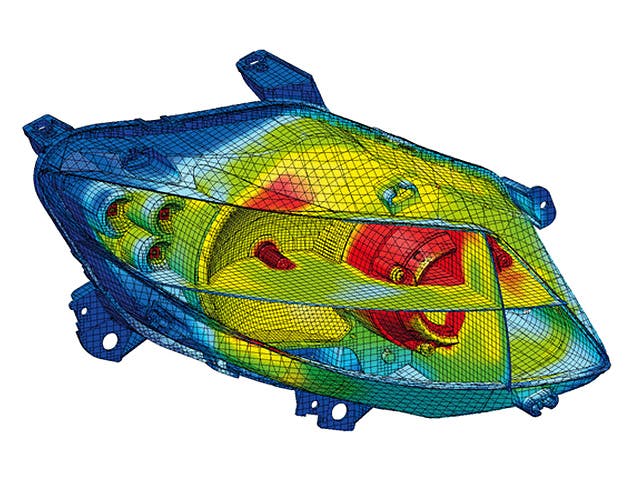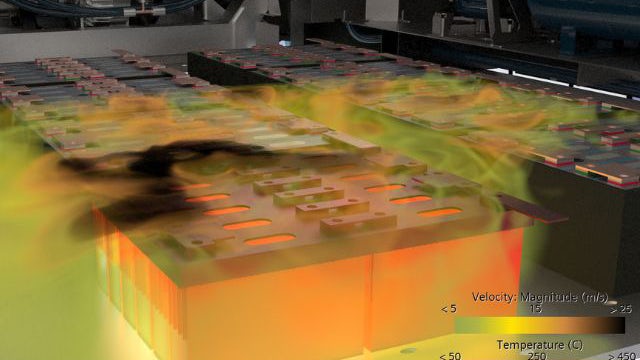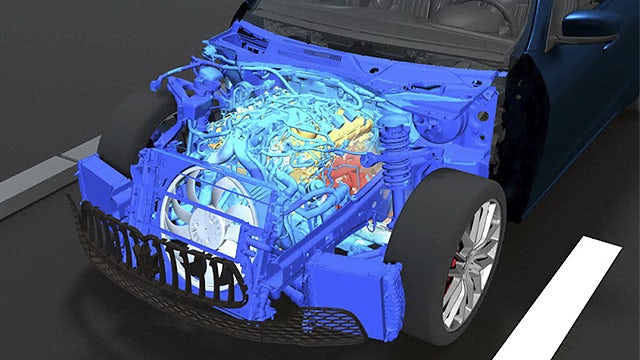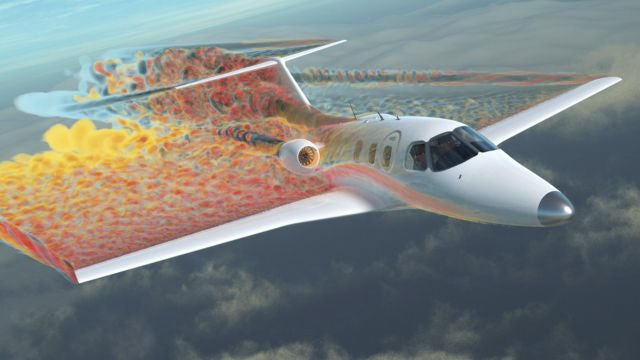Fully CAD-embedded CFD simulation enables design engineers to analysts to conduct fluid flow simulation and evaluate heat transfer in the CAD design environment, with an intuitive interface and using CAD geometry directly. This eliminates the time overhead of CAD data translation, eliminates geometry simplification or preparation for CFD steps, and allows engineers to conduct multiple design studies and evaluate results. Design engineers therefore can focus on how modifications to geometry or operating boundary conditions influence performance. As simulation results are available earlier in development, informed decisions can be made.
